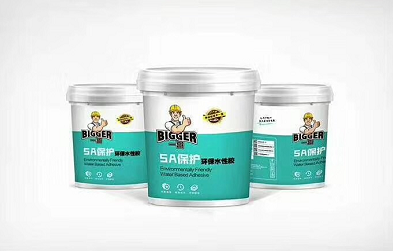How to solve the adhesion problem of water-based spray adhesive?
How to solve the adhesion problem of water-based spray adhesive?
Water-based spray adhesive has always been a hot furniture glue in furniture manufacturing industry.It has the environmental protection, safety and easy operability of traditional oil spray, which is a kind of environment-friendly furniture spraying product which adapts to the needs of social development. At present, Guangdong furniture spray adhesive manufacturer produces water-based glue majority has the problem of technology is not mature, raw material is uneven, especially not familiar to the operation of the water-based spray adhesive, often appear all sorts of problems.Today BIGGER will introduce to you the problem of how to solve the adhesion problem of water-based spray adhesive.
At present, Guangdong furniture spray adhesive manufacturer produces water-based glue majority has the problem of technology is not mature, raw material is uneven, especially not familiar to the operation of the water-based spray adhesive, often appear all sorts of problems.Today BIGGER will introduce to you the problem of how to solve the adhesion problem of water-based spray adhesive.
1.After pressing, the glue will also lead to the gelatinization, especially in the area where the backlash is stronger.
2.Check whether the bottom die is matched, whether the pressure is in place and whether the force is uniform, especially on the edge of the sofa.
3.Check the drying conditions and the surface temperature when fitting. If the temperature is too low, the adhesive force will be affected.
4.Whether the glue is applied evenly, in place, the amount of glue is enough.
5.If the oven is out of the oven, the whole action of bonding and pressing is completed within 1 '30".
6.Whether the dosage of the hardener is accurate and appropriate will affect the initial strength and heat resistance of the water-based adhesive.
7.After pressing the sponge in a short time again in the oven baking will also cause the gelatinization.
8.According to the material, the treatment agent should be selected correctly to confirm whether the treatment agent has failed (the treatment agent has been contaminated or spent too long), whether the treatment is in place (using fluorescent lamp);Is it dry completely.
9.The yellowing effect of the water-based glue and its hardener itself is very good, and the yellowing of the shoes with water-based glue is related to other factors, such as treating agent and UV irradiation.
Water-based spray adhesive has always been a hot furniture glue in furniture manufacturing industry.It has the environmental protection, safety and easy operability of traditional oil spray, which is a kind of environment-friendly furniture spraying product which adapts to the needs of social development.

1.After pressing, the glue will also lead to the gelatinization, especially in the area where the backlash is stronger.
2.Check whether the bottom die is matched, whether the pressure is in place and whether the force is uniform, especially on the edge of the sofa.
3.Check the drying conditions and the surface temperature when fitting. If the temperature is too low, the adhesive force will be affected.
4.Whether the glue is applied evenly, in place, the amount of glue is enough.
5.If the oven is out of the oven, the whole action of bonding and pressing is completed within 1 '30".
6.Whether the dosage of the hardener is accurate and appropriate will affect the initial strength and heat resistance of the water-based adhesive.
7.After pressing the sponge in a short time again in the oven baking will also cause the gelatinization.
8.According to the material, the treatment agent should be selected correctly to confirm whether the treatment agent has failed (the treatment agent has been contaminated or spent too long), whether the treatment is in place (using fluorescent lamp);Is it dry completely.
9.The yellowing effect of the water-based glue and its hardener itself is very good, and the yellowing of the shoes with water-based glue is related to other factors, such as treating agent and UV irradiation.
